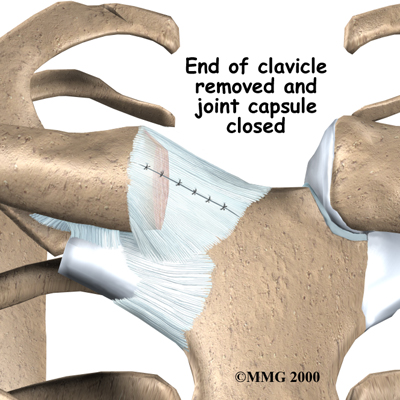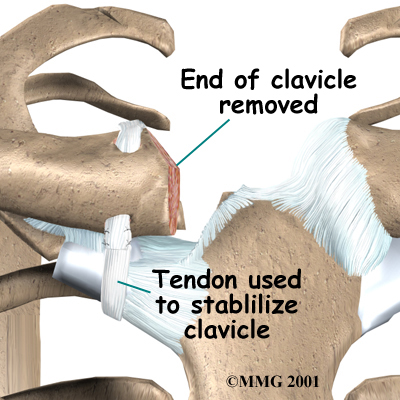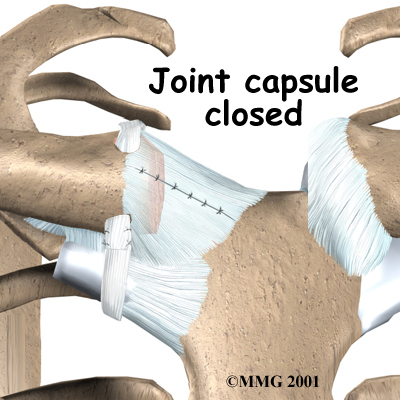Non-surgical Rehabilitation
The treatment our physiotherapist recommends will depend on the type of injury to your joint.
Sprains
A mild sprain usually gets better by resting the joint for two to three days. Ice packs can be placed on the sore joint for up to 15 minutes at a time during the first few days after the injury.
Moderate sprains may require some help to get the joint back into position. Your physiotherapist at Eastwood Physiotherapy may recommend a figure-eight strap wraps around both shoulders to support the SC joint. Patients with a moderate sprain may need to wear this type of strap for four to six weeks. The strap protects the joint from another injury and lets the injured ligaments heal and become strong again.
Anterior Dislocation
After your doctor does a closed reduction for anterior dislocation, your SC joint will need to be held perfectly still. Moving the SC joint will cause pain and may even dislocate the joint again. Your physiotherapist will probably recommend that you take pain medication and wear a figure-eight strap for at least six weeks.
Posterior Dislocation
If our physiotherapist suspects posterior dislocation, you will need to have a complete physical examination right away. You will probably be referred to a doctor for further diagnosis and treatment. We may recommend the use of a figure-eight strap for at least six weeks after closed reduction for a posterior dislocation of the SC joint.
Sometimes closed reduction for a posterior dislocation does not work, or SC joint problems become chronic. In these cases, adult patients may need surgery. The risk of harm to your heart, lungs, and other organs behind the sternum is too high. Posterior dislocation has been known to cause a ruptured esophagus, laceration of major veins, and pressure on major arteries, among other complications. These problems can kill you. Posterior dislocation has also been known to cause hoarseness, a sudden onset of snoring, and voice changes with arm movement.
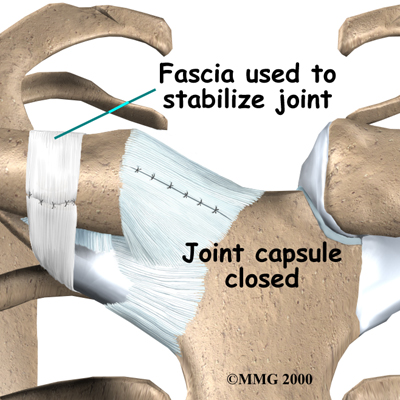 Most of the time the goal of surgery is to . When the ligaments are too severely damaged, the clavicle is surgically attached to the rib instead of the sternum. The joint will still probably be unstable, but the displaced clavicle no longer compresses the organs behind the sternum.
Most of the time the goal of surgery is to . When the ligaments are too severely damaged, the clavicle is surgically attached to the rib instead of the sternum. The joint will still probably be unstable, but the displaced clavicle no longer compresses the organs behind the sternum.
Once your physician’s treatment is complete, the physiotherapists at Eastwood Physiotherapy have treatment options that will help speed your recovery, so that you can more quickly return to your active lifestyle.
Growth Plate Injuries
Injuries to the growth plate of the clavicle usually heal without treatment. The growth plate is a section of cartilage near the end of the clavicle where bone growth occurs. Only rare cases require surgery. In younger children, the growth of the bone will remodel the fractured bone. Remodeling actually causes the collarbone to straighten as the child grows. In young adults, there is less of this straightening effect because their bone growth is nearly complete.
Osteoarthritis
Osteoarthritis of the SC joint usually responds to our physiotherapy treatments, including rest, ice, and anti-inflammatory medications. If the symptoms of osteoarthritis do not respond to basic treatment over six to 12 months, our physiotherapist may refer you for surgical evaluation.
If you don't need surgery, our physiotherapist will start you on range-of-motion exercises as pain eases, followed by a program of strengthening. At first, exercises are done with the arm below shoulder level. Your program will then advance to include strength exercises for the rotator cuff and shoulder blade muscles. Our goal is to get your shoulder moving smoothly.
Your Eastwood Physiotherapy physical or occupational therapist will give you tips on controlling your symptoms, which may include using tape to help hold the SC joint in place. Although the time required for recovery varies, you will probably progress to a home program within four to six weeks.
Post-surgical Rehabilitation
Your surgeon may have you wear a sling to support and protect the shoulder for a few days. Then your physiotherapist can begin your rehabilitation program. Our first few physiotherapy treatments will focus on controlling the pain and swelling from surgery. Ice and electrical stimulation treatments may help. We may also use massage and other types of hands-on treatments to ease muscle spasm and pain.
Physiotherapy can progress safely and quickly after a simple arthroscopic resection. Our treatments begin with range-of-motion exercises and gradually work into active stretching and strengthening. You need to avoid doing too much, too quickly.
Physiotherapy goes slower after surgeries that require a tissue graft. Your arm is usually placed in a sling to prevent shoulder movement for several weeks. After this time, our physiotherapist will begin your rehabilitation with passive exercises. During passive exercises, the shoulder joint is moved, but your muscles stay relaxed. Our physiotherapist gently moves your joint and gradually stretches your arm. You may be taught how to do passive exercises at home.
The active physiotherapy phase of our treatment usually starts four to six weeks after graft surgery. Active range-of-motion exercises help you regain shoulder movement using your own muscle power. Our physiotherapist might have you begin with light isometric strengthening exercises. These exercises work the muscles without straining the healing joint.
At about six weeks, we will have you begin more active strengthening. These exercises focus on improving strength and control of the rotator cuff muscles and the muscles around the shoulder blade.
Some of the exercises you'll do are designed to get your shoulder working in ways that are similar to your work tasks and sport activities. Our physiotherapist will help you find ways to do your tasks that don't put too much stress on your shoulder. Before your physiotherapy sessions end, we will teach you a number of ways to avoid future problems.
At Eastwood Physiotherapy, our goal is to help speed your recovery so that you can more quickly return to your everyday activities. When your recovery is well under way, regular visits to our office will end. Although we will continue to be a resource, you will be in charge of doing your exercises as part of an ongoing home program.
Eastwood Physiotherapy provides services for physiotherapy in Edmonton.
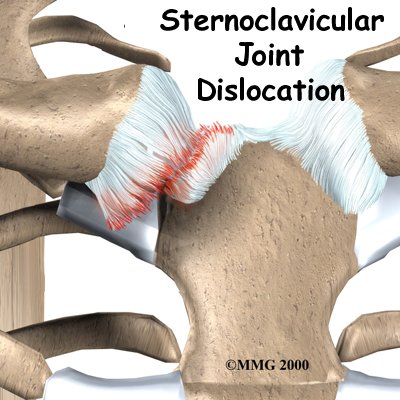



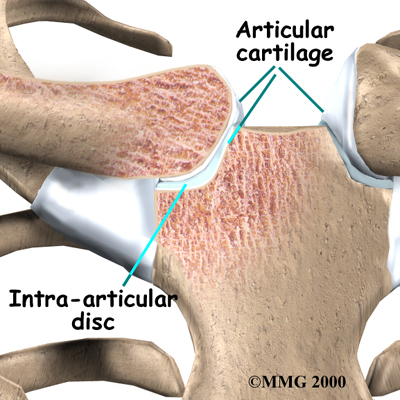
 It seems like this construction would make SC joint dislocation common, but a dislocation is actually very rare. The ligaments surrounding the SC joint are extremely strong. These
It seems like this construction would make SC joint dislocation common, but a dislocation is actually very rare. The ligaments surrounding the SC joint are extremely strong. These 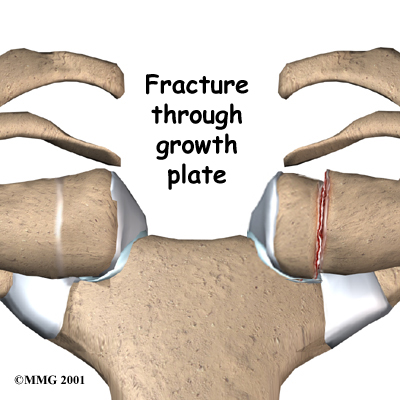
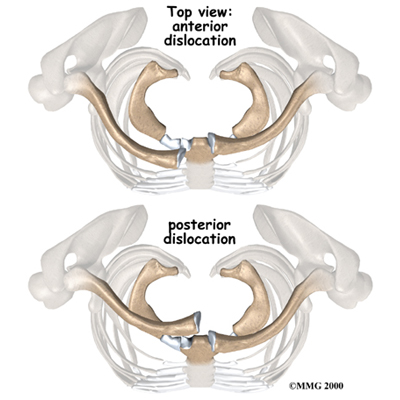
 Most of the time the goal of surgery is to
Most of the time the goal of surgery is to 